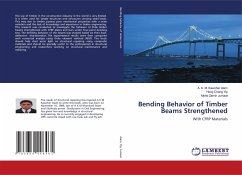In most of the civil structures, continuity between two adjacent members is necessary; this can be even though the members' angle. The joint formed from this assembling usually refers to the "corner". The term ''corner'' in this investigation is used to describe a corner joint formed by the joining; at 900 of the ends of two flexural members (Mayfield et. al, 1972) respectively. Concrete corners are found in wide variety of structures such as retaining walls, bridges and portal frame buildings. They are also common in the field of hydraulic structures, such as reservoirs, tanks, flumes and culverts. Various detailing systems have been in vogue from time to time and considerable efforts have been carried out to improve these detailing systems to achieve the optimum structural behavior. In general, the failure of opening corners is invariably characterized by the low tensile strength of concrete, resulting in the initiation of a splitting tensile crack originating at the re-entrantcorner and gradually moving out along the corner diagonal towards the exterior corner.








